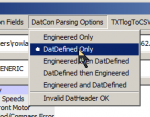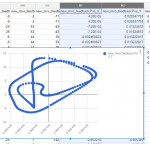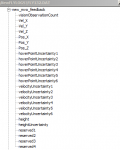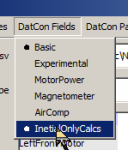The signals IMU_ATTI(0):velE and IMU_ATTI(0):velN might help. With the other DJI platforms these are velocities with respect to ground. But, that can't be the case with the Tello since it has neither GPS or a compass. I'm suspecting these may be velocity data WRT the tello. Could you do a test flight - maybe something like fly a square. Then we can take a look at these signals and see. To get position these signals will need to be integrated WRT time, but we can worry about that later.All the columns that I have looked at in detail seem to be correct (unless it is blank or obviously wrong like NAN). Its hard to say what is missing. What I _want_ there to be is something like direction and distance of travel but I don't know if it exists in the log. The Tello does have a downfacing camera that is used for optical flow tracking. Anything to do with that?
How much of the data you are seeing is unknown?
There isn't a simple answer regarding which data is unknown.
You might want to try looking at the DatDefined signals. First look at DatCon3
This is how you get CsvView to show you the DatDefined signals.






